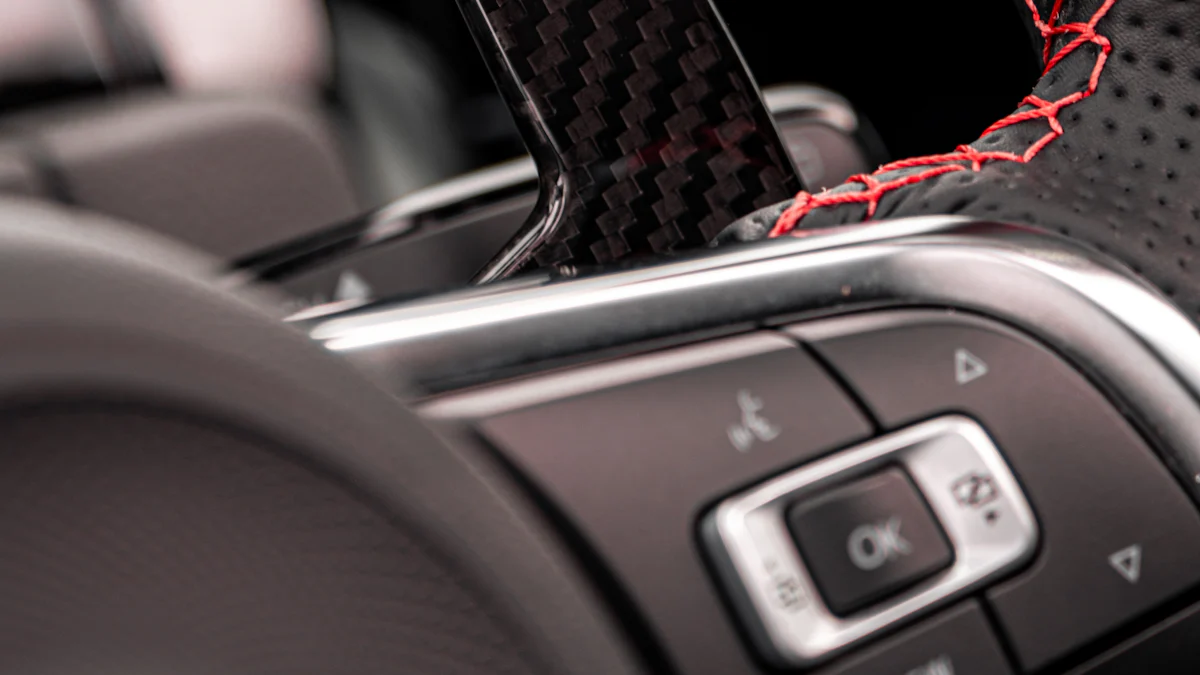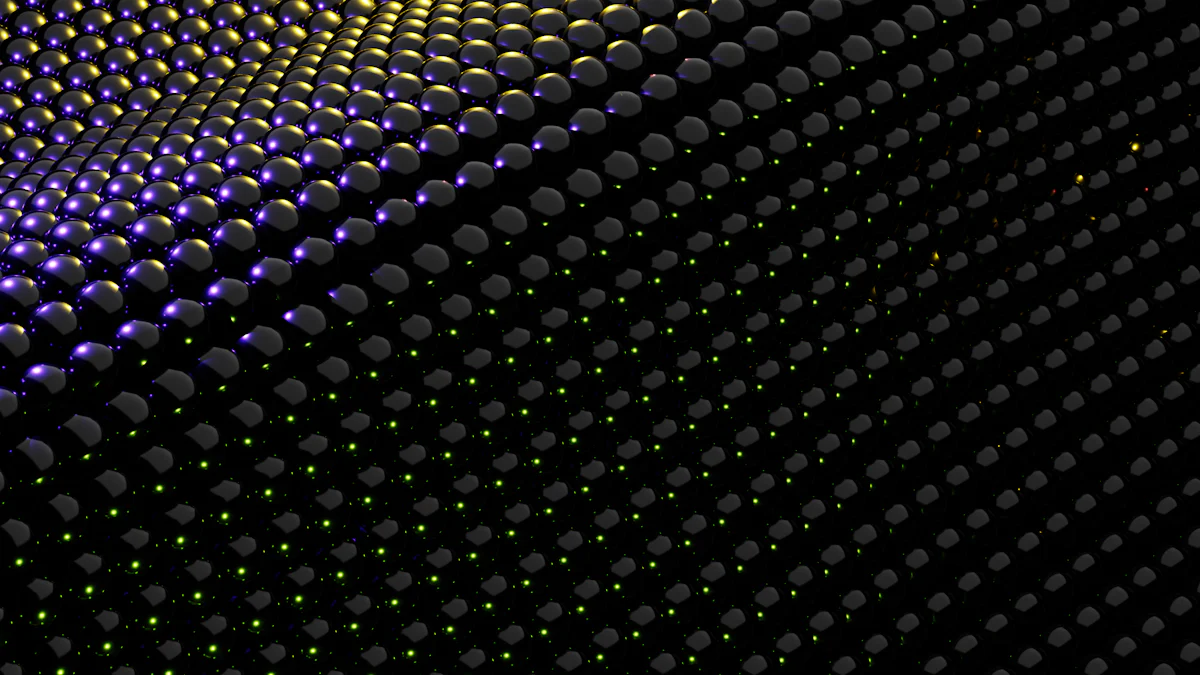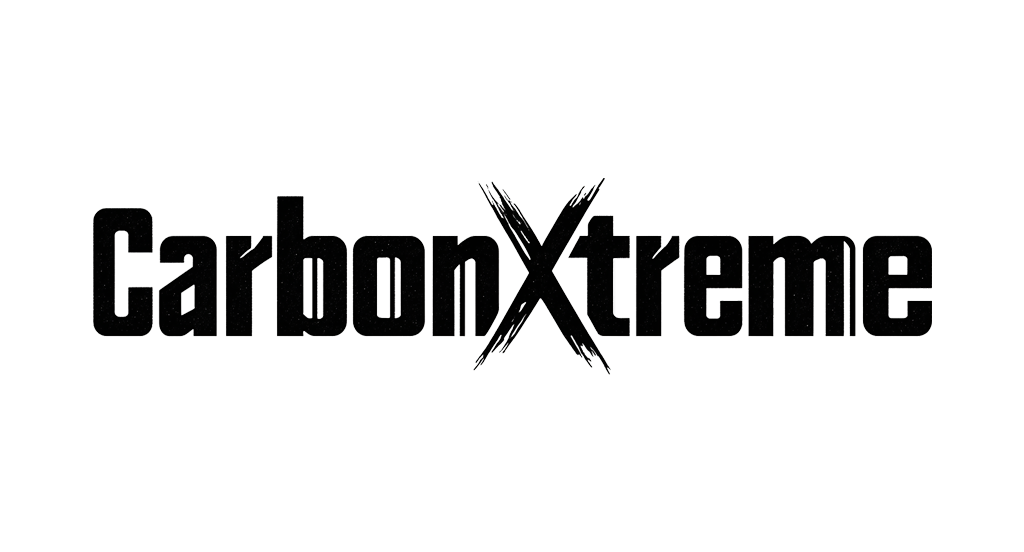Modern Vehicle Aesthetics with Carbon Fiber Logo Designs

Carbon fiber logos have transformed modern vehicle aesthetics by combining strength, durability, and lightweight properties. These logos symbolize cutting-edge technology and represent a shift toward high-performance materials in automotive design. You can see how their sleek appearance enhances the visual appeal of vehicles while reflecting the industry’s focus on advanced engineering. This material, known for its exceptional rigidity and impact resistance, ensures that carbon fiber logos not only look impressive but also stand the test of time. Their presence on vehicles conveys a sense of innovation, aligning with the evolving demands of automotive branding.
Key Takeaways
Carbon fiber logos enhance vehicle aesthetics by combining modern design with advanced engineering, making vehicles look sleek and innovative.
The lightweight nature of carbon fiber improves vehicle performance, leading to better fuel efficiency and handling, which is crucial in today’s eco-conscious market.
Durability is a key benefit of carbon fiber logos; they resist corrosion and maintain their appearance over time, reducing maintenance costs.
Customization options for carbon fiber logos are extensive, allowing vehicle owners to personalize their cars with unique designs and finishes.
Sustainable manufacturing practices are increasingly being adopted in the production of carbon fiber logos, contributing to a greener automotive industry.
The integration of carbon fiber logos into vehicle bodywork enhances aerodynamic efficiency, making them not just decorative but functional components.
As electric and autonomous vehicles rise in popularity, carbon fiber logos will play a significant role in branding, reflecting innovation and performance.
The Unique Properties of Carbon Fiber in Automotive Applications

Strength and Durability
Carbon fiber stands out as one of the most robust materials used in automotive engineering. Its strength surpasses traditional materials like steel, offering five times the strength while being significantly lighter. This exceptional strength ensures that carbon fiber components can withstand high stress and impact, making them ideal for vehicle parts that demand durability. For example, carbon fiber reinforced composites absorb large amounts of impact energy, enhancing vehicle safety during collisions. You can rely on this material to maintain structural integrity even under extreme conditions, which is why it has become a preferred choice for modern vehicles.
Additionally, carbon fiber resists corrosion and maintains its properties over time. Unlike metals that may rust or degrade, carbon fiber remains stable, ensuring long-lasting performance. This durability not only improves the lifespan of vehicle components but also reduces maintenance needs, saving you time and money in the long run.
Lightweight Nature
One of the most remarkable features of carbon fiber is its lightweight nature. It is 70% lighter than steel, making it an invaluable material for improving vehicle performance. By reducing the overall weight of a vehicle, carbon fiber enhances fuel efficiency and acceleration. This is particularly important in today’s automotive industry, where manufacturers aim to create vehicles that are both high-performing and environmentally friendly.
The lightweight properties of carbon fiber also contribute to better handling and maneuverability. When vehicles weigh less, they require less energy to move, resulting in smoother driving experiences. Whether you’re navigating sharp turns or accelerating on a highway, the reduced weight of carbon fiber components ensures optimal performance.
Visual Appeal
Carbon fiber doesn’t just excel in functionality; it also elevates the aesthetic appeal of vehicles. Its unique woven texture and sleek finish give vehicles a modern and sophisticated look. Many automakers incorporate carbon fiber into visible parts of their designs, such as logos, trims, and panels, to create a sense of luxury and innovation.
The visual appeal of carbon fiber aligns perfectly with contemporary automotive aesthetics. Its clean and minimalist appearance complements the streamlined designs of modern vehicles. By integrating carbon fiber into your vehicle’s design, you can achieve a balance between style and performance, making your car stand out on the road.
Moreover, carbon fiber’s ability to seamlessly blend with other materials allows for creative design possibilities. Whether it’s a bold logo or a subtle accent, carbon fiber enhances the overall look of a vehicle while maintaining its functional benefits.
Current Trends in Carbon Fiber Logo Designs

Minimalist Aesthetics
Minimalism has become a defining trend in modern automotive branding. Carbon fiber logos embrace this approach by focusing on clean lines and simple shapes. You often see these logos designed with a sleek and understated style, which enhances the overall elegance of a vehicle. The unique texture of carbon fiber adds depth to minimalist designs, making them visually striking without the need for excessive details.
This trend aligns with the broader movement toward streamlined automotive aesthetics. By using carbon fiber, manufacturers can create logos that reflect sophistication and innovation. The material’s ability to mimic various finishes, from smooth to textured, allows for endless customization while maintaining a minimalist appeal. You can appreciate how these designs balance simplicity with high-performance materials, creating a timeless look.
3D Effects and Depth
Three-dimensional effects have revolutionized the way carbon fiber logos are perceived. These logos now feature intricate layers and depth, giving them a dynamic and lifelike appearance. You might notice how the interplay of light and shadow on the carbon fiber surface creates a sense of movement, making the logo stand out even from a distance.
The use of advanced manufacturing techniques, such as 3D printing, has made these effects possible. This technology allows designers to experiment with complex shapes and textures that were once unattainable with traditional materials. For example, a carbon fiber logo can incorporate raised elements or beveled edges, adding a tactile quality to its design. These features not only enhance the visual appeal but also reinforce the brand’s commitment to innovation and cutting-edge technology.
Seamless Integration with Vehicle Bodywork
One of the most exciting trends in carbon fiber logo design is its seamless integration with vehicle bodywork. Instead of appearing as a separate element, these logos blend harmoniously with the car’s exterior. You’ll often find them embedded into panels or molded directly onto the surface, creating a cohesive and unified look.
This integration is particularly popular in carbon fibre car design, where every detail contributes to aerodynamic efficiency. By incorporating logos into the bodywork, manufacturers reduce drag and maintain the vehicle’s sleek profile. The lightweight nature of carbon fiber further supports this trend, ensuring that the logo doesn’t add unnecessary weight or compromise performance.
Additionally, this approach opens up new possibilities for customization. You can choose logos that match the color and finish of your vehicle, creating a personalized and polished appearance. This trend highlights how carbon fiber logos are not just decorative elements but integral components of modern automotive design.
Manufacturing Innovations in Carbon Fiber Logos
Advanced Composites
You see advanced composites playing a crucial role in the evolution of carbon fiber logos. These composite materials combine carbon fibers with resins to create structures that are both lightweight and incredibly strong. This combination ensures that the logos maintain their shape and integrity under various conditions. Automotive manufacturing relies on these materials to produce logos that can withstand extreme temperatures, UV exposure, and physical stress.
The use of carbon fiber composites allows for greater design flexibility. Manufacturers can mold these materials into intricate shapes and patterns, enabling unique and customized logo designs. This innovation has elevated the aesthetic appeal of vehicles while maintaining the functional benefits of carbon fiber. By choosing logos made from advanced composites, you benefit from a product that is both durable and visually striking.
3D Printing Technology
3D printing technology has revolutionized the way carbon fiber logos are created. This method allows for precise and efficient production, reducing waste and speeding up the manufacturing process. Automotive manufacturing has embraced this technology to produce logos with complex geometries and detailed textures that were previously difficult to achieve.
With 3D printing, you can expect logos that are not only visually appealing but also highly functional. The process enables manufacturers to experiment with innovative designs, such as layered textures or hollow structures, without compromising strength. This approach ensures that the logos remain lightweight while retaining their durability. The integration of 3D printing into automotive manufacturing highlights the industry’s commitment to innovation and cutting-edge technology.
Sustainable Manufacturing Practices
Sustainability has become a key focus in automotive manufacturing, and carbon fiber logos are no exception. Manufacturers are adopting eco-friendly practices to reduce the environmental impact of producing composite materials. For example, some companies now use recycled carbon fibers or bio-based resins in their logos, minimizing waste and conserving resources.
By choosing logos made through sustainable practices, you contribute to a greener future. These practices not only reduce the carbon footprint of automotive manufacturing but also align with the growing demand for environmentally responsible products. The shift toward sustainability reflects the industry’s dedication to balancing performance with environmental stewardship. You can feel confident knowing that your vehicle’s logo represents both innovation and a commitment to preserving the planet.
The Future of Carbon Fiber Logos in Automotive Applications
Applications in Electric Vehicles (EVs)
Carbon fiber logos are becoming a defining feature in the design of electric vehicles. As EVs prioritize lightweight construction to enhance battery efficiency, carbon fiber plays a crucial role. By incorporating logos made from composite materials, manufacturers reduce unnecessary weight while maintaining durability and style. This approach aligns with the industry’s focus on creating high-performance and eco-friendly vehicles.
You can see how brands like BMW have embraced this trend. For example, the BMW i3 and i8 models introduced a carbon fiber-intensive approach to automotive manufacturing. These vehicles not only showcased lightweight designs but also highlighted the aesthetic and functional benefits of carbon fiber logos. The use of such logos reflects the innovation driving the EV market, where every detail contributes to performance and sustainability.
Carbon fiber logos also symbolize the advanced technology behind EVs. Their sleek and modern appearance complements the futuristic designs of electric vehicles, creating a cohesive visual identity. By choosing an EV with a carbon fiber logo, you align yourself with a movement that values both innovation and environmental responsibility.
Role in Autonomous Vehicles
Autonomous vehicles represent the next frontier in automotive applications, and carbon fiber logos are set to play a significant role in their branding. These vehicles rely on cutting-edge technology, and carbon fiber logos serve as a visual representation of this innovation. Their unique texture and design reflect the sophistication of self-driving systems, making them an ideal choice for autonomous vehicle manufacturers.
The integration of carbon fiber logos into autonomous vehicles goes beyond aesthetics. These logos often blend seamlessly with the vehicle’s bodywork, enhancing its aerodynamic profile. This design choice not only improves the vehicle’s efficiency but also reinforces its futuristic appeal. You can expect to see more autonomous vehicles featuring carbon fiber logos as the industry continues to evolve.
Additionally, carbon fiber’s durability ensures that these logos withstand the rigorous demands of autonomous vehicles. From extreme weather conditions to constant exposure to sunlight, composite materials maintain their integrity over time. This reliability makes carbon fiber logos a practical and stylish option for self-driving cars.
Expanding Customization Options
Customization has become a key trend in modern automotive design, and carbon fiber logos offer endless possibilities. Manufacturers now use advanced techniques, such as 3D printing, to create logos with intricate patterns and textures. This technology allows you to personalize your vehicle’s logo, ensuring it reflects your unique style.
The versatility of composite materials enables a wide range of finishes, from glossy to matte. You can choose a logo that complements your vehicle’s color and design, creating a cohesive and polished look. This level of customization enhances the overall ownership experience, making your vehicle truly one of a kind.
Carbon fiber logos also open the door to innovative design concepts. For instance, some manufacturers embed LED lighting into the logos, adding a dynamic element to their appearance. These features not only elevate the visual appeal but also highlight the innovation behind carbon fiber-intensive models. By opting for a customized carbon fiber logo, you embrace a blend of style, performance, and individuality.
Carbon fiber logos redefine vehicle aesthetics by combining sleek design with advanced engineering. Their unique properties, such as lightweight construction and durability, make them a perfect fit for modern automotive trends. These logos not only enhance the visual appeal of vehicles but also align with the industry’s focus on performance and innovation. As electric and autonomous vehicles gain prominence, carbon fiber logos will play a pivotal role in branding and customization, offering endless possibilities for personalization. By choosing a vehicle with a carbon fiber logo, you embrace a future where style meets cutting-edge technology.
FAQ
What makes carbon fiber logos unique compared to traditional materials?
Carbon fiber logos stand out due to their exceptional strength, lightweight nature, and modern aesthetic. Unlike traditional materials like steel or aluminum, carbon fiber offers five times the strength while being significantly lighter. Its woven texture and sleek finish also give it a sophisticated and futuristic look, making it a popular choice for modern vehicle branding.
Are carbon fiber logos durable in extreme conditions?
Yes, carbon fiber logos are highly durable and can withstand extreme conditions. They resist corrosion, UV exposure, and physical stress, ensuring long-lasting performance. Whether exposed to harsh weather or high-impact situations, these logos maintain their structural integrity and appearance over time.
How do carbon fiber logos improve vehicle performance?
Carbon fiber logos contribute to vehicle performance by reducing weight. Their lightweight properties help minimize the overall weight of the vehicle, which enhances fuel efficiency, acceleration, and handling. This makes them an ideal choice for manufacturers focused on creating high-performing and eco-friendly vehicles.
Can carbon fiber logos be customized?
Absolutely! Carbon fiber logos offer extensive customization options. Manufacturers use advanced techniques like 3D printing to create intricate patterns, textures, and finishes. You can choose from glossy, matte, or textured designs to match your vehicle’s style. Some logos even feature embedded LED lighting for a dynamic and personalized touch.
Are carbon fiber logos environmentally friendly?
Yes, many manufacturers now adopt sustainable practices when producing carbon fiber logos. They use recycled carbon fibers and bio-based resins to minimize environmental impact. By choosing these logos, you support eco-friendly manufacturing and contribute to a greener future.
Why are carbon fiber logos popular in electric vehicles?
Electric vehicles prioritize lightweight construction to improve battery efficiency and performance. Carbon fiber logos align with this goal by reducing unnecessary weight while maintaining durability and style. Their sleek and modern design also complements the futuristic aesthetics of electric vehicles, making them a perfect fit for EV branding.
How do carbon fiber logos integrate with vehicle bodywork?
Carbon fiber logos often blend seamlessly with the vehicle’s bodywork. Manufacturers embed them into panels or mold them directly onto the surface, creating a cohesive and aerodynamic design. This integration enhances the vehicle’s overall appearance and contributes to its streamlined profile.
What role do carbon fiber logos play in autonomous vehicles?
Carbon fiber logos symbolize the advanced technology behind autonomous vehicles. Their unique texture and design reflect the innovation of self-driving systems. These logos also enhance the vehicle’s aerodynamic efficiency by integrating smoothly with the bodywork, reinforcing the futuristic appeal of autonomous cars.
Are carbon fiber logos worth the investment?
Yes, carbon fiber logos are worth the investment for their durability, lightweight properties, and aesthetic appeal. They enhance vehicle performance, reduce maintenance needs, and add a touch of sophistication to your car. Their long-lasting nature ensures that you get value for your money over time.
How can I maintain the appearance of a carbon fiber logo?
Maintaining a carbon fiber logo is simple. Clean it regularly with a soft cloth and mild soap to remove dirt and debris. Avoid abrasive cleaners or tools that could scratch the surface. Proper care ensures that your logo retains its sleek and polished look for years to come.
